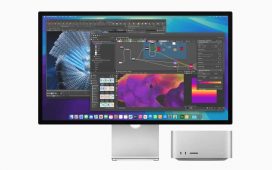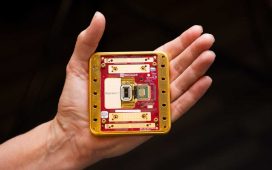
The use of Linux as a desktop operating system has hit a new high, according to new data from Statcounter.
The open source operating system has appeared on just over 4% of desktops worldwide for the first time – up from just under 3% a year ago. It might not seem like much, but for a niche operating system like Linux it’s quite a big step.
So what’s driving this? Looking at the Statcounter data a little more closely, one reason for the overall rise is a big jump in the use of Linux in India – up from 8% in February last year to 15% last month.
Usage in the United States has also grown, albeit rather less dramatically from 2.5% a year ago to 3.85% last month.
Linux is free to install and can be a good way of reusing older hardware, and modern distributions are easier to work with than previously, all of which is perhaps fueling demand.
Measuring market share for operating systems is often a tricky business, and there are other sources that don’t show the same breakthrough. Gaming platform Steam reports for example that just 1.6% of the devices its customers are using are running Linux.
Data from the US government’s Digital Analytics Program shows that the Linux operating system is found on about 2.2% of the devices that access its official websites.
But as over half of the devices going to these sites are mobile (57%), the actual proportion of PCs running Linux will be much higher – and probably more in line with the Statcounter data.
The Linux Foundation’s own research shows that the operating system is in fine health. Nearly two-thirds (64%) of the companies it surveyed said they use it.
However, Linux is popular for everything from web servers to cloud computing – the desktop is one of its more niche uses.
Developers are one of the main groups that are still using desktop Linux – Stack Overflow’s 2023 developer survey found that 27% of developers used Ubuntu for personal and professional use, 16% said they used Windows Subsystem For Linux, and 8% said they used Debian.
There was a time when open source enthusiasts believed that desktop Linux could be a rival to Windows. However, a hugely fragmented marketplace (there are a lot of different flavors of Linux) plus the steep learning curve needed by the average user who wanted to install it, meant that challenge rather fizzled out.
That didn’t stop cries of ‘this is the year of the Linux desktop’ that lasted for a few years.
Linux is growing, but Windows can relax
As such, Microsoft can probably relax a little bit – even if the current rate of Linux growth was maintained it will still take decades for overturn Windows’ market share.
In any case, the PC is now just one part of the overall computing market which encompasses smartphones, tablets, and wearable devices too.
In the broader computing ecosystem, open source is doing fine. Android – built on the Linux kernel – remains the world’s most popular operating system.











